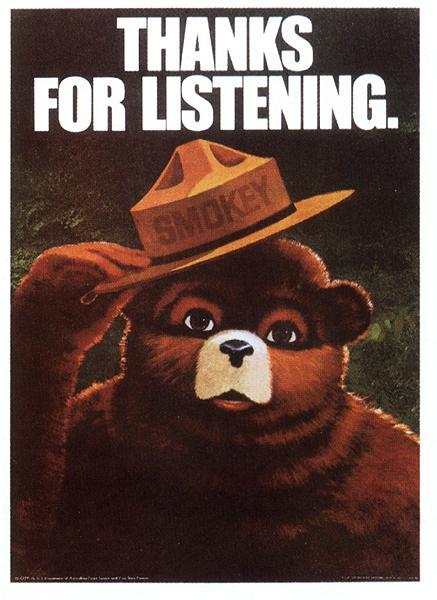 NEWS RELEASE
NEWS RELEASE
MINISTRY OF
NATURAL RESOURCES
****************************
New fires
At the time of this report today, there have been two new fires in the Northeast Region.
Sault 61 was a 0.1 hectare fire that is already out.
Algonquin Provincial Park 33 is also a 0.1 hectare fire currently receiving suppression support.
This fire is classified as not under control at this time.
Existing fires
Three new fires were confirmed yesterday in the region.
Sudbury 185 in Killarney Provincial Park was a small (0.2 hectares) island fire in O.S.A. Lake that is now out.
Located south of Nagagamisis Provincial Park, Hearst 23 is 0.8 hectares in size and is not under control.
Cochrane 48 was confirmed north of Moosonee at 30.0 hectares and is being observed, which means that it is not receiving suppression action due to agency resource management objectives.
Guelph 1, a 13.6-hectare fire burning in the Wainfleet Bog near Port Colborne, is now under control.
While MNR will continue to work with local officials to monitor the fire, the Niagara Peninsula Conservation Authority is now the lead agency.
Hunting safety during forest fire season
Fall is in the air across most of northern Ontario.
We have already had some cool nights with the faint scent of wood smoke in the air.
This time of year hunting has begun, and the Ministry of Natural Resources wishes to remind hunters that fire rangers are still working in the bush.
Safety is everyone’s responsibility!
Fire rangers are still actively working in the bush and forested areas.
Forest fires do occur in the fall and it is very important that hunters be aware that fire rangers may be actively working in hunting areas.
Here are 10 things hunters should know about fire rangers:
- Fire rangers are briefed on safety precautions to help prevent any sort of hunting accident.
- Fire rangers wear an orange long-sleeved shirt, green pants, and a yellow or red hard hat.
- Fire rangers crews are made up of four people, so expect to see more than one person in the area.
- Fire rangers are trained to handle bear encounters, and will blow whistles to alert other Fire rangers of a bear’s presence, or to scare the bear away.
- Fire rangers have access to areas via boat or truck.
- Fire rangers have access to remote and isolated areas via helicopter or fixed-winged aircraft such as a float plane.
- Fire rangers have a good working knowledge of the local area; if you see a Fire rangers while hunting, you can ask them where they are working, what area is affected by the fire or if there are any kind of road closures.
- Fire rangers have radio contact with their Fire Management Headquarters and carry satellite phones.
- Fire rangers may be camping, cooking, sleeping and operating equipment in the bush for up to 14 days.
- Fire rangers can suppress forest fires on both Crown and private land
Where can hunters get more information?
While planning your hunting trip make sure to visit the map of current forest fires in Ontario to find out more information about forest fires and to see a map of active forest fires in Northern Ontario.
The location of these fires may affect your hunting trip.
Take time to program 310-FIRE (3473) into your cell phone, this is the Forest Fire Reporting Hotline.
It is important to note that this phone number does not work with out of province cell phones or satellite phones, in which case call OPP Communications Centre at 1-888-310-1122.
If you are south of the French River in Ontario, call the local fire department.
Regional fire activity facts:
- There are 13 active fires in the Northeast Region covering a total of 43,251.6 hectares.
- To date, 828 fires in the Northeast Region have burned 52,935.1 hectares.
Fire hazard
There are currently no Restricted Fire Zones imposed by the Ministry of Natural Resources.
A reminder that municipalities may have fire bans in place, so please ensure to check with them before doing any outdoor burning.
Ontario Parks may also have their own restrictions in place for each campground.
For information on fire restrictions in parks, please click here.
****************************